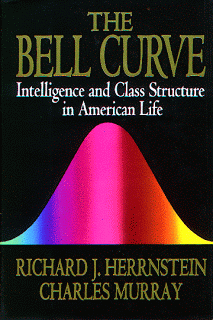Alex Constantine - December 2, 2012
By Nathaniel Comfort
The Chronicle of Higher Education, November 12, 2012
 "The ultimate ideal sought," wrote Harvey Ernest Jordan in 1912, "is a perfect society constituted of perfect individuals." Jordan, who would later be dean of medicine at the University of Virginia, was speaking to the importance of eugenics in medicine—a subject that might seem tasteless and obsolete today. Yet nearly a century later, in 2008, Cold Spring Harbor Laboratory, the biomedical research institute on Long Island's north shore, published a book titled Davenport's Dream, which shows that eugenic visions persist. Charles Davenport, a colleague and friend of Jordan's, had directed Cold Spring Harbor for the first third of the 20th century, turning it from a sleepy, summertime marine-biology laboratory into a center for genetics research—and the epicenter of American eugenics.
"The ultimate ideal sought," wrote Harvey Ernest Jordan in 1912, "is a perfect society constituted of perfect individuals." Jordan, who would later be dean of medicine at the University of Virginia, was speaking to the importance of eugenics in medicine—a subject that might seem tasteless and obsolete today. Yet nearly a century later, in 2008, Cold Spring Harbor Laboratory, the biomedical research institute on Long Island's north shore, published a book titled Davenport's Dream, which shows that eugenic visions persist. Charles Davenport, a colleague and friend of Jordan's, had directed Cold Spring Harbor for the first third of the 20th century, turning it from a sleepy, summertime marine-biology laboratory into a center for genetics research—and the epicenter of American eugenics.
Davenport's Dream is a facsimile of Davenport's major work, Heredity in Relation to Eugenics (1911), prefaced by nearly 200 pages of commentary by scientists, historians, and legal experts celebrating Davenport and expanding on questions of genetics and eugenics in biomedicine. In the volume, the genome guru Maynard V. Olson writes that dbSNP, the database of small genetic variations, makes possible the fulfillment of Davenport's dream. "Here," he writes, "is the raw material for a real science of human genetic perfection."
Davenport thought he had the raw material for a real science of human perfection. The original conception of eugenics, described by the British polymath Sir Francis Galton in the late 19th century, was based on the breeder's subjective, holistic understanding of heredity. The rediscovery of Mendel's rules of heredity in 1900 seemed to place eugenics on an empirical, quantitative, scientific footing. And so it did, relative to Sir Francis.
Davenport and his cronies used genetic arguments to promote the betterment of the human race through marriage, immigration, and sterilization laws, as well as through propaganda and research. But eventually, Progressive-era human genetics and eugenics came to seem out of date. Through the second half of the 20th century, Davenport was geneticist non grata, an embarrassing black mark on the pedigree of human genetics, like a Nazi grandfather you'd rather not bring up in conversation. Since the 1970s "eugenics" has been a dirty word. But in Davenport's Dream, the geneticist and historian Elof Carlson insists that eugenics still has a role in our time, and Matt Ridley wrote that "Charles Davenport had the best of intentions"; it's just that his idealism got ahead of his knowledge and of the available technology. What changed? And what didn't?
Davenport dreamed of biologically engineering society. But the mechanisms available to him were primitive and heavy handed. Progressive-era eugenics sought to eliminate undesirable traits (negative eugenics) and cultivate desirable ones (positive eugenics) by population control, mostly through regulating immigration and sex. Eugenicists were interested in the genetics of disease, personality, intelligence, and race—just as we are today. Birth control, marriage restrictions, and sexual sterilization of "defectives" (a medical term still in use as late as the 1970s) were among their means of effecting genetic change. They hoped people would voluntarily do the right thing for the greater good—but if they didn't, the state had a responsibility to do it for (i.e., to) them.
Davenport and others allowed their prejudices to guide their research, leading to simplistic theories and egregious laws. Historians have documented how eugenics was used to discriminate against blacks as well as Southern and Eastern European immigrants; and of course, there is the matter of the "model sterilization law," written by Davenport's superintendent Harry Laughlin, which the Nazis took as the basis for their eugenic sterilization law of 1933. The authors of Davenport's Dream evidently felt that enough time had passed to allow us to bury the scalpel and focus on some of the more positive commonalities between modern genetic medicine and eugenics.
There was indeed a medical side to Progressive-era eugenics that has gotten lost among the more sensational and horrific tales of punitive sterilization and race psychology. This medically oriented eugenics was seen as a kind of long-term public health. It concerned the hereditary component of complex diseases like obesity, mental illness, and predisposition to infectious disease. To these problems, eugenically minded scientists, doctors, and public-health workers applied both the science and the prejudices of the day. They saw negative eugenics as an essential component of any systematic effort to eliminate disease. They meant infectious diseases, like tuberculosis, and various forms of mental retardation, like "amaurotic idiocy," which includes what we call Tay-Sachs disease. They perhaps overestimated the role of the genes—but perhaps so do we.
Medical genetics in the Progressive era, then, was a form of preventive medicine. It still is, by and large. Jordan, in the article already cited, also wrote, "Modern medicine, yielding to the demands of real progress, is becoming less a curative and more a preventive science." Ninety-nine years later, Leroy Hood, one of the pioneers of DNA sequencing, wrote that thanks to genome science, "medicine will move from a reactive mode (curing patients already sick) to a preventive mode (keeping people well)." Modern technology has made preventive medical genetics much simpler and much less authoritarian than in Davenport's day. It is now possible to select individual embryos, and increasingly individual genes, rather than controlling who gets to marry or reproduce. Just as importantly, genetic counselors and other medical professionals give individuals choices over their own reproduction. The social context, then, has changed dramatically, but the promises of genetic medicine have remained constant.
Traditionally, medical genetics has been associated with the elimination of negative clinical traits—disease and mental retardation—rather than the enhancement of positive ones. Indeed, as genetics developed into a mainstream medical specialty, genetic enhancement came to be seen as immoral. In 1989, the pioneering gene therapist W. French Anderson wrote, "Once we step over the line that delineates treatment from enhancement, a Pandora's box would open. On medical and ethical grounds a line should be drawn excluding any form of enhancement engineering."
Since then, molecular genetics has significantly changed what counts as disease. For centuries, diseases have been defined by their symptoms. Increasingly, they are being defined by their mechanisms—by the presence of a malformed enzyme, or even a variation in the DNA. One can now, therefore, have a disease without being sick. Presymptomatic disease is often called "latent" disease. Doctors are increasingly moving from treating disease to treating risk.
This new disease concept can reduce patient suffering by enabling doctors to detect and treat disease before it starts. It is also big business, because it expands the medical clientele to include the entire population. David Nichols, vice dean for education at the Johns Hopkins School of Medicine, likes to stress biomedicine's growing emphasis on prevention and detection of disease in its "latent phase." When I asked Nichols who, then, counted as a patient, he said, "We are all patients now."
The moral clarity of French Anderson—once the consummate gene cowboy—now seems naïve. How can we distinguish between preventing heart disease and minimizing the consequences of a poor diet? Would reducing the chances of alcohol abuse count as therapy or enhancement? One can upregulate growth hormone just as easily in a dwarf, a person of short stature within the normal range, or someone of average height who simply wishes to be tall. In the end, no logical friction can slow the slide from prevention to enhancement.
Nor is there a defensible line between preventing suffering in individuals and preventing it in the wider population. Ridley and others write of a benign "individual" eugenics. "There is every difference between the goal of individual eugenics and Davenport's goal," writes Ridley in his introduction to Davenport's Dream. "One aims for individual happiness with no thought to the future of the human race; the other aims to improve the race at the expense of individual happiness." The shift from communalism to individual choice has indeed moderated some of the worst abuses of eugenics. Today, reproductive-genetic decisions are made by patients and their families, not by the state. This is a very real and welcome change from a century ago.
But today's self-styled eugenicists by no means ignore the future of the race. Davenport's Dream was only the most sober of a raft of pro-eugenics books published around the turn of the 21st century. This literature has a millennial feel, with titles like Redesigning Humans, Radical Evolution, Enhancing Evolution, More Than Human, and The Price of Perfection. Twenty-first-century eugenicists, while grounded in selfish individualism, cannot resist the allure of taking control of our own evolution, of engineering our future. They gleefully transgress the last sacred moral genetic boundary, solemnly etched by French Anderson. Why not, they ask, design children according to our whims and tastes? Genetic medicine, they tell us, is increasingly enabling us to choose our traits, pick our predispositions, prevent disease and weakness.
The perfect society composed of perfect individuals will be engineered in our biomedical laboratories. The standards of perfection are selected more democratically now, but they are conditioned by the perversities of market pressures and fashion.
"Eugenics is the self-direction of human evolution," proclaimed the poster for the 1921 International Eugenics Congress. It is this sense of eugenics that Maynard Olson, Matt Ridley, and others are invoking. For example, in Enhancing Evolution, John Harris proposes "both the wisdom and the necessity of intervening in what has been called the natural lottery of life, to improve things by taking control of evolution and our future development to the point, and indeed beyond the point, where we humans will have changed, perhaps into a new and certainly into a better species altogether."
The goal of all experimental science is to control and ultimately engineer the system at hand. That goal is independent of state control, of sterilization laws, and of Nazi grandfathers. The notion that our gene pool is our most important natural resource and that it must be managed is, if anything, more true today than in the Progressive era.
Eugenics is still a dirty word for many, but if the scientists are using it we have to pay attention. This is not, however, your grandfather's eugenics. Actually, it is closer to your great-great-grandfather's. Sir Francis Galton defined eugenics as the forces under social control that improve "the race"—in his case, alternately the British and humanity at large—"under existing conditions of law and sentiment." Sir Francis sought "not only the restoration of the average worth" of the human race, debased as he saw it by disease and mental degeneration, "but to raise it higher still."
That "restoration" included the elimination of hereditary disease and disability, both physical and mental, and the strengthening of the constitution against infectious disease. Raising it higher still meant improving humankind physically, intellectually, morally, and spiritually. Sir Francis understood eugenics to be something that everyone capable of rational thought and possessed of a humanitarian, communitarian spirit would enjoin willingly. Today we live under different conditions of laws and sentiment. But as society evolves a eugenic impulse remains.
The eugenic impulse drives us to eliminate disease, to live longer and healthier, with greater intelligence and a better adjustment to the conditions of society. It arises whenever the humanitarian desire for happiness and social betterment combines with an emphasis on heredity as the essence of human nature. It is the aim of control, the denial of fatalism, the rejection of chance. The dream of engineering ourselves, of reducing suffering now and forever.
The question is not one of whether there ought to be such an impulse, whether it should be called eugenics, or even whether biomedicine ought to focus so much on genetics. These things just are. And besides, the health benefits, the intellectual thrill, and the profits of genetic biomedicine are too great for us to do otherwise. Resistance would be ill-advised and futile.
The important questions, rather, concern how to proceed: How do we ensure that appropriate weight is given to the environmental causes of illness? How do we minimize profiteering and racism in this age of selfishness? And above all, how do we know when we know enough to control our own evolution?
Nathaniel Comfort is an associate professor of the history of medicine at the Johns Hopkins University, and author of The Science of Human Perfection: How Genes Became the Heart of American Medicine, just out from Yale University Press. This essay is adapted from that work.










The science of risk, of latent illness; sounds like an insurance company’s dream and a regular person’s nightmare (“uh, let’s see here, Mr Courtsal, We can see from your genome that you are one real heavy possible future health risk for all kinds of really crazy things we can’t really predict, but want half your savings in order to continue to provide health insurance for you in the future; sorry.”) Gawd, then there’s the guy at the UW who I asked;”so if a person is malnourished, isn’t that necessarily going to distort their specific genetic expression? Oh course. So you really can’t predict at all how a person is really going to turn out at all given the huge range of epigenetic possibilities both good and bad, right? Correct.” Good luck trying to predict anything from a persons’ genome then. . . Darn.
And cain’t you hear the pseudoscientific nazis saying,”Damn, and I thought sterilizing all those drug addicts was going to prevent addiction/alcoholism in the future.”
The article is a small trove of names drawn from the lot of the pseydoscientific nazis you nention.
It also gave me an excuse to make a new entry in the “Nazis on campus’ tag in the anti-fascist encyclopedia index — I pounce on articles in that category because of my, ah … media bias … favoring non-eugenicists on campus.
– AC